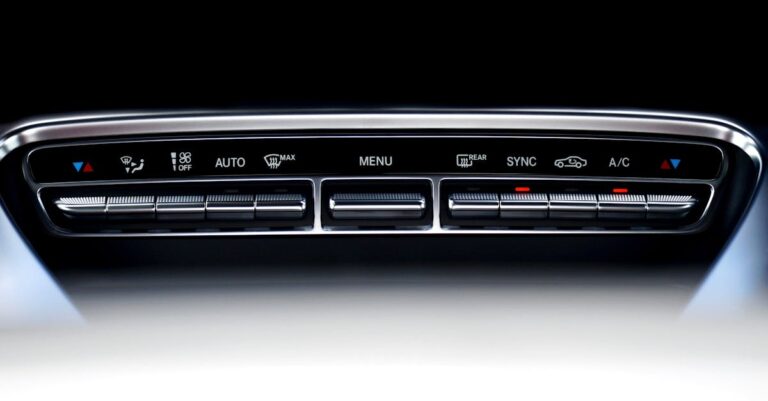Table Of Content
- Choosing The Right Engine Oil: Your Ultimate Guide
- Why Picking the Right Engine Oil is a Big Deal
- Understanding the Basics: What Does Engine Oil Actually Do?
- Decoding the Numbers: What Oil Viscosity Really Means
- Exploring Engine Oil Types: Which Crew Does Your Car Belong To?
- Reading the Labels: Oil Standards and Certifications Demystified
- Your Car’s Bible: Consulting the Owner’s Manual
- Key Factors Influencing Your Engine Oil Choice
- Oops! Common Mistakes to Avoid When Choosing Oil
- Conclusion: Making the Smart Choice for Your Engine’s Health
- Frequently Asked Questions (FAQs)
Choosing The Right Engine Oil: Your Ultimate Guide
Why Picking the Right Engine Oil is a Big Deal
Okay, let’s talk cars. Specifically, let’s talk about the lifeblood of your engine: the oil. Think of it like this: you wouldn’t feed a world class athlete junk food and expect peak performance, right? The same logic applies to your car’s engine. Choosing the right engine oil isn’t just another maintenance task; it’s crucial for keeping your ride running smoothly, efficiently, and for a long, long time. Get it wrong, and you could be looking at poor performance, reduced fuel economy, or even serious engine damage down the road. Scary stuff! But don’t worry, navigating the world of engine oil doesn’t have to feel like deciphering ancient hieroglyphics. This guide is here to break it all down, step by step, so you can confidently pick the perfect potion for your powertrain.
Understanding the Basics: What Does Engine Oil Actually Do?
Before we dive into the nitty gritty of viscosities and synthetic versus conventional, let’s get a handle on what engine oil is actually doing under the hood. It’s more than just a slippery liquid; it’s a multitasking marvel!
Lubrication: Keeping Things Slippery
This is the headliner, the main event. Your engine is packed with metal parts moving at incredible speeds, often just microns apart. Without oil, this metal on metal contact would cause catastrophic friction, heat, and wear almost instantly. Engine oil creates a thin, protective film between these moving parts – pistons, crankshaft, camshaft, bearings, you name it – allowing them to glide past each other smoothly. It’s like the ultimate backstage pass, ensuring everyone moves without bumping into each other.
Cooling Down Hot Spots
While your car’s cooling system (radiator, coolant, etc.) handles the bulk of the heat management, engine oil plays a vital supporting role. As oil circulates, it absorbs heat from areas the coolant can’t easily reach, like the underside of the pistons or the crankshaft bearings. It then carries this heat away to the oil pan (sump), where it can dissipate. Think of it as a mobile heat sponge, soaking up excess warmth from critical zones.
Cleaning Up the Mess: Detergency
Internal combustion isn’t the cleanest process. It produces byproducts like soot, sludge, and tiny metal particles from wear. Good engine oil contains detergents and dispersants. Detergents work like soap, scrubbing away these deposits from engine surfaces. Dispersants act like carriers, suspending these tiny particles within the oil itself, preventing them from clumping together and forming damaging sludge. The oil filter then traps these contaminants as the oil circulates. It’s basically the engine’s internal cleaning crew.
Sealing the Gaps
Inside your engine, particularly between the piston rings and the cylinder walls, there are microscopic gaps. Engine oil helps to fill these tiny spaces, creating a better seal. This seal is crucial for maintaining compression (which equals power) and preventing combustion gases from leaking past the pistons into the crankcase (an issue known as blow by).
Fighting Off Rust and Corrosion
Combustion also creates acidic byproducts and moisture. Left unchecked, these can cause rust and corrosion on vital metal engine components. Engine oils contain special additives that neutralize these acids and form a protective barrier on metal surfaces, preventing corrosion and keeping your engine’s internals looking good (even though you can’t see them!).
Decoding the Numbers: What Oil Viscosity Really Means
Alright, you’ve grabbed a bottle of oil. You see numbers like 5W 30, 10W 40, or 0W 20 staring back at you. What’s the deal? This is the oil’s viscosity grade, and it’s probably the single most important factor when choosing the right oil. Viscosity simply refers to a fluid’s resistance to flow. Think honey (high viscosity) versus water (low viscosity). Engine oil needs the *right* viscosity: thin enough to flow quickly when cold, but thick enough to protect when hot.
What’s Up with SAE?
You’ll almost always see “SAE” before the viscosity numbers. This stands for the Society of Automotive Engineers. They’re the organization that sets the standards and testing procedures for measuring and classifying oil viscosity. So, when you see SAE 5W 30, you know it meets specific flow requirements defined by the SAE.
Untangling Multigrade Oils (Like 5W 30)
Most modern engine oils are “multigrade.” This means they’re designed to perform well across a range of temperatures, unlike older “monograde” oils (like SAE 30) which were only suitable for a narrow temperature band. Let’s break down that common “XW-XX” format, using SAE 5W 30 as our example:
The ‘W’ Number: Cold Weather Warrior
The first number followed by the ‘W’ (which stands for Winter, not Weight!) indicates the oil’s viscosity, or flowability, at cold temperatures. The lower this number, the better the oil flows when it’s cold. So, a 5W 30 oil will flow more easily on a frosty morning than a 10W 30 oil. Why does this matter? When you start your engine, especially in the cold, you want the oil to reach critical engine parts as quickly as possible to provide lubrication. Thinner oil (lower W number) gets there faster, reducing wear during those crucial first few seconds of startup.
The Second Number: Handling the Heat
The second number (the 30 in 5W 30) indicates the oil’s viscosity at normal engine operating temperatures (around 100°C or 212°F). This number represents the oil’s resistance to thinning out as it gets hot. A higher number means the oil remains thicker and provides better protection at high temperatures. So, a 5W 30 oil is thinner at high temperatures than a 5W 40 oil. It’s crucial to use the viscosity recommended by your manufacturer, as they’ve designed the engine clearances and oil pump for a specific operating viscosity.
Exploring Engine Oil Types: Which Crew Does Your Car Belong To?
Beyond viscosity, you’ll encounter different types of engine oil. The main distinction lies in the base oil used.
Conventional (Mineral) Oil: The Old Reliable
This is the traditional stuff, refined directly from crude oil pumped out of the ground. It’s the most affordable option and provides perfectly adequate lubrication and protection for many standard engines under normal driving conditions. However, its molecules are less uniform in size and shape compared to synthetics, meaning it breaks down faster under high heat and stress, and doesn’t flow as well in extreme cold. It generally requires more frequent oil changes.
Full Synthetic Oil: The High Performer
Synthetic oil is engineered in a lab. It starts with crude oil (or other raw materials) but undergoes significant chemical modification. The result is a base oil with uniformly sized and shaped molecules. This molecular consistency gives synthetic oil superior performance characteristics:
- Better high temperature stability: Resists breakdown and oxidation much better than conventional oil, crucial for turbocharged or high performance engines.
- Excellent low temperature flow: Pours easily even in freezing weather, providing faster startup lubrication.
- Improved wear protection: Forms a stronger, more resilient lubricating film.
- Enhanced cleaning power: Often contains more potent detergent and dispersant additives.
- Longer oil change intervals: Its robustness allows for extended drain intervals (but always follow manufacturer recommendations!).
The downside? It’s the most expensive type of oil. However, for demanding applications, modern engines, or those seeking maximum protection and potentially longer change intervals, it’s often the best choice.
Synthetic Blend Oil: The Best of Both Worlds?
As the name suggests, this is a mix of conventional and synthetic base oils. The goal is to offer some of the benefits of synthetics – like better wear protection and high temperature stability than conventional oil – but at a lower price point than full synthetic. It’s a good middle ground option for drivers who want a bit more protection than conventional oil offers, perhaps for slightly more demanding driving like frequent stop and go traffic or light towing, without the full cost of synthetic.
High Mileage Oil: For the Seasoned Veterans
Once your car crosses the 75,000 mile mark (or thereabouts), you might consider switching to a high mileage oil. These oils (which can be conventional, blend, or synthetic based) contain special additives and seal conditioners. These conditioners are designed to swell and rejuvenate aging engine seals, helping to reduce or prevent oil leaks – a common issue in older engines. They might also have slightly higher viscosity and enhanced additives to combat sludge buildup common in older vehicles.
Reading the Labels: Oil Standards and Certifications Demystified
Okay, viscosity and type are sorted. But what about those other symbols and acronyms on the bottle, like API, ILSAC, or ACEA? These represent performance standards and certifications, ensuring the oil meets specific quality and performance criteria set by industry bodies and manufacturers.
The API Donut: What’s Inside?
Look for the American Petroleum Institute (API) “Service Symbol,” often called the “Donut.”
- The top half shows the API Service Category. For gasoline engines, it starts with “S” (for Service, originally Spark ignition). The current standard is typically API SP, preceded by SN Plus, SN, SM, etc. Always use the category specified in your owner’s manual or a newer one (they are generally backward compatible, but check!). Using an older, obsolete category like SJ in a modern engine is a bad idea. For diesel engines, the category starts with “C” (for Commercial, originally Compression ignition), like CK 4 or FA 4.
- The center displays the SAE Viscosity Grade (e.g., 5W 30).
- The bottom half might indicate if the oil meets certain energy conserving standards (“Resource Conserving”).
Using an oil with the correct API rating ensures it has the right properties (like wear protection, deposit control, oxidation resistance) for your specific engine technology.
ILSAC Standards: Fuel Economy Focus
Often seen alongside API ratings, especially on lighter viscosity oils (like 0W 20 or 5W 30), is the ILSAC “Starburst” symbol. ILSAC (International Lubricant Specification Advisory Committee) standards are primarily developed by Japanese and US automakers and focus heavily on fuel economy improvements and emission system protection, in addition to the engine protection requirements of API. The current standard is ILSAC GF 6 (which comes in two flavors: GF 6A for backward compatibility and GF 6B for newer, mainly 0W 16 oils). If your manual specifies an ILSAC rating, look for the Starburst!
ACEA Specs: The European Angle
If you drive a European car (VW, BMW, Mercedes Benz, etc.), you’ll likely need an oil meeting ACEA (Association des Constructeurs Européens d’Automobiles) specifications. European engine designs and emission regulations often differ, requiring oils with specific characteristics, particularly regarding long term durability (longer drain intervals are common in Europe) and compatibility with advanced emission systems like Diesel Particulate Filters (DPFs). ACEA sequences are designated by letters/numbers (e.g., A3/B4, C3, A5/B5). ‘A’/’B’ sequences are for gasoline and light duty diesels, while ‘C’ sequences are “SAPS” limited (Sulphated Ash, Phosphorus, Sulphur) for compatibility with catalysts and particulate filters. Using the wrong ACEA spec oil in a European car can lead to serious problems, especially with emission systems. Always check your manual for the required ACEA sequence.
Your Car’s Bible: Consulting the Owner’s Manual
If there’s one takeaway message from this entire guide, it’s this: Read. Your. Owner’s. Manual. Seriously. Your car’s manufacturer knows exactly what type of oil, what viscosity grade, and what performance specifications (API, ILSAC, ACEA, or specific manufacturer specs like VW 504.00 or GM dexos1) your engine needs to perform optimally and reliably. They designed the engine; they know best! The manual removes all the guesswork. It will tell you the recommended viscosity (sometimes offering alternatives for different climates), the required performance standards, and often the recommended oil change interval. Sticking to the manufacturer’s recommendations is also crucial for maintaining your vehicle’s warranty.
Key Factors Influencing Your Engine Oil Choice
While the owner’s manual is your primary guide, understanding these factors can help you make informed decisions, especially if the manual offers options or if your circumstances are a bit unusual.
Vehicle Age and Mileage Matters
As mentioned earlier, older engines with higher mileage might benefit from high mileage oil formulations designed to condition seals and manage minor leaks or oil consumption. Newer engines, especially those with turbochargers or direct injection, often require specific synthetic oils meeting the latest API/ILSAC or manufacturer standards to handle the higher stresses and temperatures involved.
Your Driving Habits: City Slicker or Highway Star?
How you drive impacts your oil.
- Severe Conditions: Lots of short trips (where the engine doesn’t fully warm up), stop and go city driving, driving in extreme heat or cold, towing heavy loads, or driving in dusty conditions are all considered “severe service.” These conditions put more stress on the oil, causing it to break down faster. If this sounds like your routine, using a high quality synthetic or synthetic blend and potentially shortening your oil change interval (even if the manual suggests longer) is a smart move.
- Normal Conditions: Mostly highway driving at consistent speeds allows the engine to operate efficiently and puts less stress on the oil. Conventional oil might be perfectly fine, and you can likely follow the standard oil change interval.
Climate Control: How Temperature Plays a Role
Where you live matters. If you live in a region with very cold winters, an oil with a lower ‘W’ viscosity number (like 0W or 5W) is crucial for ensuring good cold start performance. If you live in a consistently hot climate or frequently push your engine hard (like towing in summer), ensuring the oil’s high temperature viscosity (the second number) meets or perhaps slightly exceeds the minimum recommendation (if allowed by the manual) can provide an extra margin of protection. However, never deviate wildly from the manufacturer’s recommended viscosity range.
Oops! Common Mistakes to Avoid When Choosing Oil
Let’s quickly cover some common pitfalls:
- Ignoring the Owner’s Manual: We’ve hammered this point, but it’s the #1 mistake. Trust the engineers who built your car.
- Focusing Only on Price: Choosing the absolute cheapest oil without considering the required specifications can be costly in the long run due to potential engine wear or damage.
- Using the Wrong Viscosity: Too thick, and it won’t flow well when cold or might reduce fuel economy. Too thin, and it won’t protect adequately when hot. Stick to the recommended grade(s).
- Mixing Different Oil Types/Viscosities (Generally): While topping off a quart low with a slightly different *type* in an emergency is usually okay, it’s not ideal practice. Consistently mixing different viscosities or conventional with synthetic dilutes the properties of the better oil. Best to stick with one type and grade between changes.
- Forgetting About Performance Standards: Grabbing a 5W 30 bottle isn’t enough. Does it meet the API SP, ILSAC GF 6, or specific ACEA/manufacturer spec your car requires? Check the donut and other certifications!
- Believing Marketing Hype Over Specs: Fancy labels are nice, but the specifications (API, ACEA, viscosity, manufacturer approvals) are what truly matter.
Conclusion: Making the Smart Choice for Your Engine’s Health
Choosing the right engine oil might seem complex initially, but once you understand the basics – viscosity, oil types, and performance standards – it becomes much clearer. Remember, engine oil is performing several critical jobs simultaneously inside that complex machine under your hood. Giving it the right formulation is like giving your car a health boost from the inside out. Always start with your owner’s manual; it holds the key recommendations tailored specifically for your vehicle. Consider your driving habits, climate, and vehicle age to fine tune your choice if options are presented. By investing a little time in understanding and selecting the correct engine oil, you’re investing in the longevity, performance, and reliability of your car for years and miles to come. Happy motoring!
Frequently Asked Questions (FAQs)
- Can I switch between conventional and synthetic oil?
Yes, absolutely! You can switch from conventional to synthetic, synthetic to conventional, or conventional to a synthetic blend (and vice versa) at your next oil change. Modern oils are compatible. Switching to synthetic might even help clean up some sludge left by previous conventional oil use. Just be sure the oil you switch to meets the viscosity and performance specs in your owner’s manual.
- How often should I really change my oil?
The best answer is to follow the interval recommended in your owner’s manual. Many modern cars with synthetic oil have intervals of 7,500, 10,000, or even 15,000 miles. However, the manual usually specifies two intervals: one for “normal” driving and a shorter one for “severe” service (lots of short trips, stop and go, extreme temps, towing). Be honest about your driving habits. If you mostly drive under severe conditions, follow the shorter interval, regardless of the oil type used.
- Is more expensive oil always better?
Not necessarily “better” in all cases, but often, higher priced oils (especially full synthetics) offer superior performance, particularly under extreme conditions (high heat, extreme cold) and may allow for longer drain intervals. The “best” oil is the one that meets or exceeds the specifications required by your car’s manufacturer, fits your driving conditions, and meets your budget. A basic conventional oil that meets specs is far better than the “wrong” expensive synthetic.
- What happens if I use the wrong viscosity oil (e.g., 10W 40 instead of 5W 20)?
Using oil that’s too thick (like 10W 40 when 5W 20 is required) can hinder flow, especially when cold, potentially leading to increased startup wear. It can also slightly decrease fuel economy as the engine works harder to pump the thicker oil. Using oil that’s too thin (like 5W 20 when 10W 40 is required) might not provide adequate protection at high temperatures, leading to increased wear on engine components. Always stick as closely as possible to the manufacturer’s recommendation.
- Does the brand of oil matter much?
While major brands invest heavily in research, development, and quality control, the most important factor is whether the oil meets the required specifications (API, ILSAC, ACEA, manufacturer specific) and viscosity grade listed in your owner’s manual. As long as an oil carries the proper certifications for your vehicle, regardless of brand, it should perform as expected. Some premium brands may include more advanced additive packages, but ensure the basic requirements are met first.









